From toadfish and amphipods to a vivid siphonophores, the underwater mountains comprising the Nazca and Salas y Gómez Ridges host amazingly diverse life forms.
The majority of both ridges lie outside of any country’s jurisdiction — in the high seas — leaving these distinctive and understudied ecosystems vulnerable to human exploitation from climate change, plastic pollution, overfishing, and potential deep-sea mining.
Many experts in marine protection and policy believe that the Nazca and Salas y Gómez Ridges are a top priority for designation as one of the world’s first high-seas marine protected areas.
Recent Schmidt Ocean Institute-supported expeditions to the region discovered over 150 suspected new species and several new seamounts.
To expand on these expeditions’ success and contribute vital data to inform future protections of these high seas areas, the #NazcaHighSeas expedition brought an international team of scientists to map and characterize the biodiversity in the area.
Here are some of the amazing scenes documented this expedition in the high seas off the coast of South America.
From SchmidtOcean
A team of oceanographers led by Schmidt Ocean Institute have discovered and mapped a new seamount on the Nazca Ridge in international waters, 900 miles off the coast of Chile.
The Nazca Ridge, an underwater mountain chain, along with the adjoining Salas y Gómez Ridge, is one of several global locations under consideration for designation as a high seas marine protected area.
Tomer Ketter has been fascinated by maps since his early days of exploring with his father.
Today, he is co-chief scientist of the NazcaHighSeas expedition, leading a team of international scientists to explore lush underwater habitats that were largely unmapped and understudied — until now.
The team has collected valuable hydrographic and oceanographic data and they have observed breathtaking wildlife along the Nazca and Salas y Gómez Ridges in the high seas.
Their work could provide the data needed to establish protections in these essential areas of our global ocean.
The seamount discovery is one of many from a 28-day expedition to the international waters of the Nazca Ridge led by Schmidt Ocean Institute in partnership with Ocean Census and the Center for Coastal and Ocean Mapping/Joint Hydrographic Center at the University of New Hampshire.
During this expedition, the science department discovered, mapped, and explored a new seamount with Remotely Operated Vehicle (ROV) SuBastian.
The seamount covers an area of about 70 sq km.
The summit depth is 994m and the base is at 4,103m giving it a prominence of 3,109m over the surrounding seafloor.
Hydrographic experts used the Research Vessel Falkor (too)‘s EM124 multibeam echosounder to map the seamount, located 700 nautical miles west of Chile in international waters.
The ship’s crew has proposed a name currently under review with the GEBCO Subcommittee on Underwater Feature Names.
Credit: Schmidt Ocean Institute
The seamount covers an area of about 70 sq km.
The summit depth is 994m and the base is at 4,103m giving it a prominence of 3,109m over the surrounding seafloor.
Hydrographic experts used the Research Vessel Falkor (too)‘s EM124 multibeam echosounder to map the seamount, located 700 nautical miles west of Chile in international waters.
The ship’s crew has proposed a name currently under review with the GEBCO Subcommittee on Underwater Feature Names.
Credit: Schmidt Ocean Institute
The newly discovered underwater mountain is over 1.9 miles (3109 meters) tall and supports a thriving deep-sea ecosystem.
In addition to mapping the seamount, the team conducted an exploratory dive with an underwater robot on one of the mountain’s ridges, finding sponge gardens and ancient corals.
This expedition is special because it is the first one led entirely by Schmidt Ocean Institute staff.
While we normally support visiting scientists and partners from outside organizations, this time, the science department on the ship and staff on shore are coordinating all aspects of this research along the Nazca and Salas y Gómez Ridges in the high seas.
These diverse and understudied ecosystems are vulnerable to human exploitation from climate change, plastic pollution, overfishing, and potential deep-sea mining.
Many experts in marine protection and policy believe that these ridges are a top priority for designation as one of the world’s first high-seas marine protected areas.
The NazcaHighSeas expedition builds upon the thrilling discoveries made by international scientists working in the region since January 2024, and it will establish a scientifically rich baseline that will help advance informed high seas protections.
The team mapped and explored nine additional unprotected features on this Southeast Pacific underwater mountain range.
One of the mountains harbors a pristine coral garden consisting of deep-sea corals that provide shelter for an array of organisms such as rockfish, brittle stars, and king crabs.
With an area of approximately 800 square meters, this coral garden is about the size of three tennis courts.
One of the mountains harbors a pristine coral garden consisting of deep-sea corals that provide shelter for an array of organisms such as rockfish, brittle stars, and king crabs.
With an area of approximately 800 square meters, this coral garden is about the size of three tennis courts.
During a 40-day research expedition along the Salas y Gómez Ridge, an underwater mountain range that extends from Chile to Rapa Nui, also known as Easter Island, an international team of scientists observed individual seamounts harboring distinct ecosystems like glass sponge gardens and deep coral reefs.
These distinct habitats provide homes for awe-inspiring deep-sea creatures — octopus, squid, fish, corals, mollusks, sea stars, sea urchins, crabs, squat lobsters, and more.
Many of these animal sightings could be species new to science or an expansion of the known range.
Experts hope their robust findings will advance efforts to establish high-seas protected area designation for this biologically rich region.
Beyond mapping seamounts to high resolution and conducting ROV surveys, the team captured the first camera footage of a live Promachoteuthis squid, a genus that is so rare that only three species have been described based on only a few collected specimens, several of which are from the late 1800s.
Until now, the squid genus has only been characterized from dead samples found in nets.
They also documented a Casper octopus, the first time this species has been seen in the Southern Pacific.
Two rare Bathyphysa siphonophores, commonly known as flying spaghetti monsters, were also seen during the expedition.
Until now, the squid genus has only been characterized from dead samples found in nets.
They also documented a Casper octopus, the first time this species has been seen in the Southern Pacific.
Two rare Bathyphysa siphonophores, commonly known as flying spaghetti monsters, were also seen during the expedition.
This is the first footage of a live Promachoteuthis squid.
Until now, the squid genus has only been characterized from dead samples found in nets.
The squid was documented on Dive 693, while exploring an unnamed seamount (internally designated as T06) along the Nazca Ridge, off the coast of Chile.
Credit: ROV SuBastian / Schmidt Ocean InstituteROV SuBastian / Schmidt Ocean Institute
Until now, the squid genus has only been characterized from dead samples found in nets.
The squid was documented on Dive 693, while exploring an unnamed seamount (internally designated as T06) along the Nazca Ridge, off the coast of Chile.
Credit: ROV SuBastian / Schmidt Ocean InstituteROV SuBastian / Schmidt Ocean Institute
“Upon concluding our third expedition to the region, we’ve explored around 25 seamounts on the Nazca and Salas y Gómez Ridges,” said Co-Chief Scientist and Schmidt Ocean Institute Marine Technician, Tomer Ketter.
“Our findings highlight the remarkable diversity of these ecosystems, while simultaneously revealing the gaps in our understanding of how the seamount ecosystems are interconnected.
We hope the data gathered from these expeditions will help inform future policies, safeguarding these pristine environments for future generations.”
Since January 2024, Schmidt Ocean Institute has supported several scientific explorations, including the most recent NazcaHighSeas expedition, to study biodiversity and oceanographic conditions along the Nazca, Salas y Gómez, and Juan Fernandez Ridges.
International scientists have used the technology and expertise available on the Research Vessel Falkor (too) for data collection and a scientific examination of this essential area in our global Ocean.
These underwater mountains harbor remarkable biodiversity, and the data gathered during our time here will help establish the baseline scientific knowledge needed to inform conservation and protection efforts, which many experts believe is critical to the overall health of the Ocean and the planet.
The expedition was the third exploration this year of the Salas y Gómez and Nazca Ridges conducted on the Schmidt Ocean Institute’s R/V Falkor (too).
Two previous expeditions in January and February documented over 150 previously unknown species and numerous range extensions for animals not previously known to live on the ridge.
An additional 20 suspected new species were collected during this expedition.
Two previous expeditions in January and February documented over 150 previously unknown species and numerous range extensions for animals not previously known to live on the ridge.
An additional 20 suspected new species were collected during this expedition.
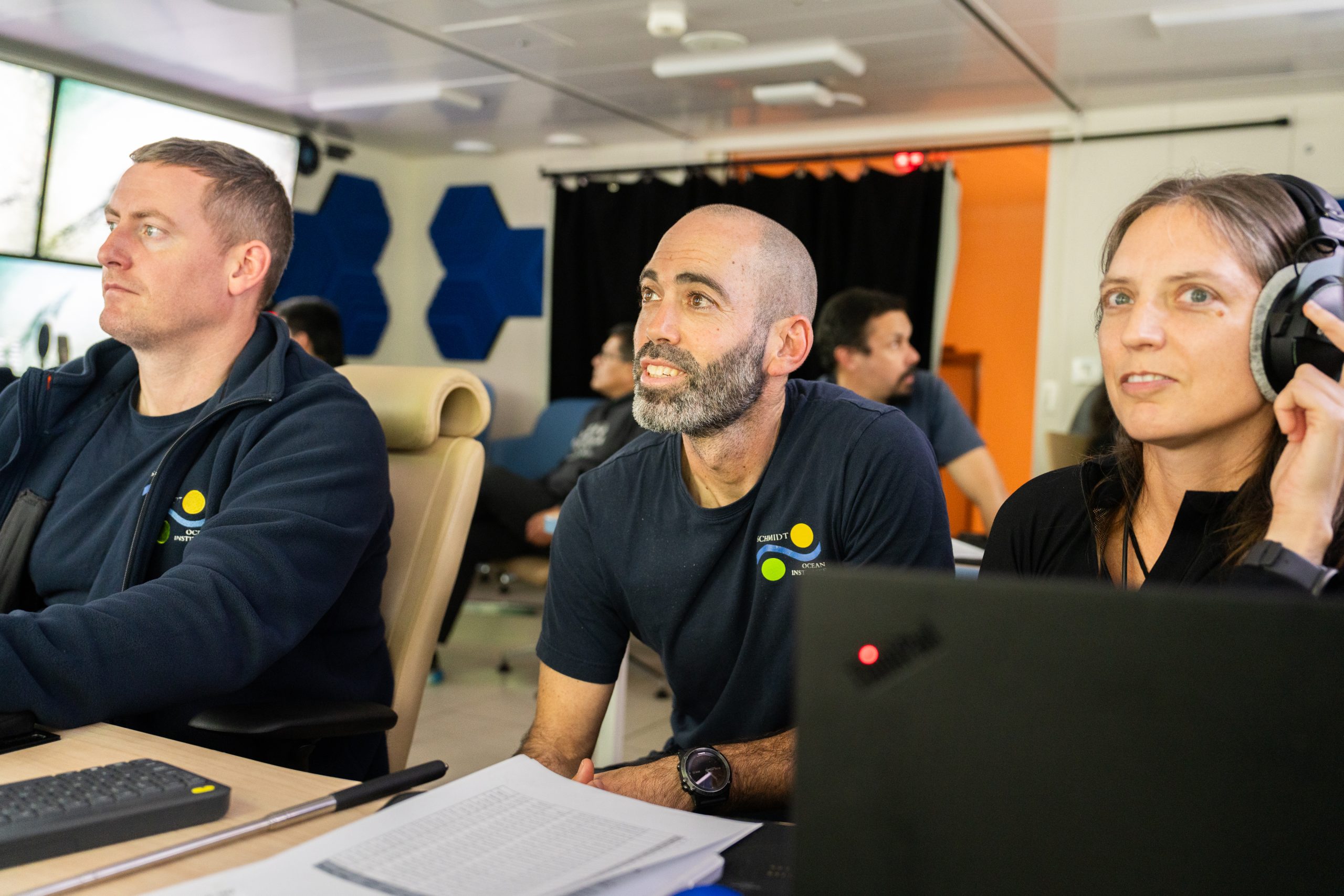 Marine Technician and Expedition Co-Chief Scientist Tomer Ketter, supervises Mission Control room monitors, together with ROV Supervisor Michael Rae, and Erin E.
Marine Technician and Expedition Co-Chief Scientist Tomer Ketter, supervises Mission Control room monitors, together with ROV Supervisor Michael Rae, and Erin E.Easton, Assistant Professor in the School of Earth, Environmental, and Marine Sciences at the University of Texas Rio Grande Valley – UTRGV.
Credit: Misha Vallejo Prut / Schmidt Ocean InstituteMisha Vallejo Prut / Schmidt Ocean Institute
Prior to Schmidt Ocean Institute’s expeditions this year, 1,019 species were known to live in this portion of the Pacific Ocean.
The number now exceeds 1,300 and is growing.
The records will be sent to the Ocean Census, an international, collaborative alliance led by the Nippon Foundation and Nekton to accelerate the discovery and protection of ocean life.
“The seamounts of the Southeastern Pacific host remarkable biological diversity, with species found nowhere else to date,” said Prof.
Alex David Rogers, Science Director of Ocean Census, “The work our taxonomists have conducted aboard Falkor (too), supported by Schmidt Ocean Institute team, will significantly enhance our understanding of the distribution of remarkable life forms on these underwater mountains, including several that have never before been mapped or seen by human eyes.”
Alex David Rogers, Science Director of Ocean Census, “The work our taxonomists have conducted aboard Falkor (too), supported by Schmidt Ocean Institute team, will significantly enhance our understanding of the distribution of remarkable life forms on these underwater mountains, including several that have never before been mapped or seen by human eyes.”
A large bamboo coral holding benthic ctenophores, barnacles, a sea star, and ophiuroids was documented on Dive 696 while exploring a newly discovered and mapped seamount, cataloged as KW-14176, along the Nazca Ridge off the coast of Chile.
Credit: ROV SuBastian / Schmidt Ocean InstituteROV SuBastian / Schmidt Ocean Institute
Credit: ROV SuBastian / Schmidt Ocean InstituteROV SuBastian / Schmidt Ocean Institute
High-resolution mapping was conducted by a team of hydrographers who graduated from the Center for Coastal and Ocean Mapping/Joint Hydrographic Center at the University of New Hampshire.
The seafloor data will be included in the Nippon Foundation-GEBCO Seabed 2030 Project and will contribute to international understanding and management of Nazca and Salas y Gómez.
“This was the first mission led by the staff and crew of Schmidt Ocean Institute, with wonderful colleagues from a number of organizations on board, and I was privileged to be among the scientists joining the research vessel remotely,” said Co-Chief Scientist and Schmidt Ocean Institute Executive Director Dr. Jyotika Virmani.
“The discovery of a new seamount almost 2 miles tall – almost four times as tall as the Burj Khalifa – with a vibrant ecosystem was very exciting.
Only 26% of the seafloor has been mapped to this high resolution and each expedition on Falkor (too) brings into focus a little more of the unknown seabed and life on our home planet.”
“The discovery of a new seamount almost 2 miles tall – almost four times as tall as the Burj Khalifa – with a vibrant ecosystem was very exciting.
Only 26% of the seafloor has been mapped to this high resolution and each expedition on Falkor (too) brings into focus a little more of the unknown seabed and life on our home planet.”
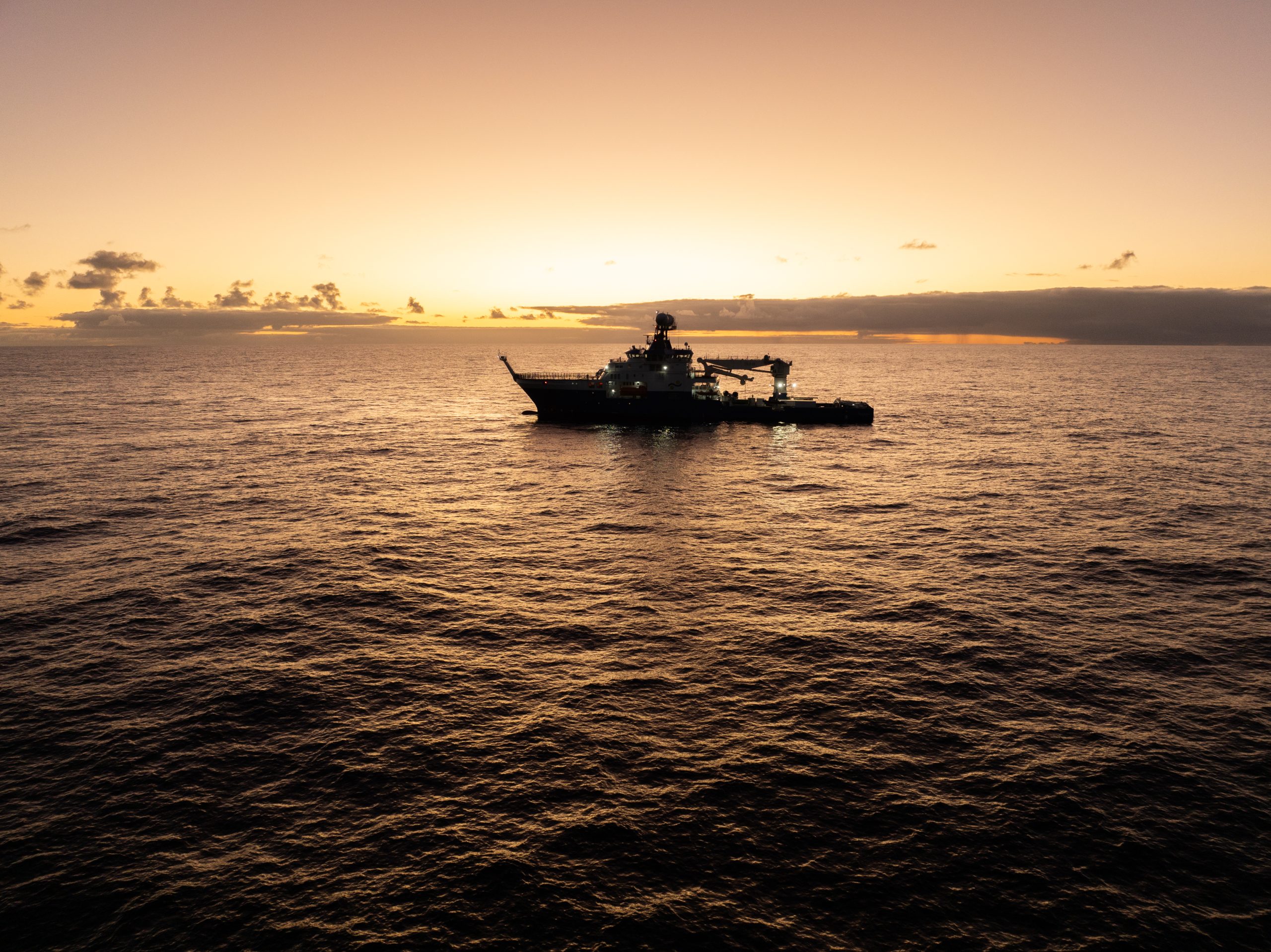 Oceanographic Research Vessel Falkor (too) in the South Pacific, sailing above the Nazca Ridge, an underwater seamount chain off the coast of Chile.
Oceanographic Research Vessel Falkor (too) in the South Pacific, sailing above the Nazca Ridge, an underwater seamount chain off the coast of Chile.Credit: Misha Vallejo Prut / Schmidt Ocean InstituteMisha Vallejo Prut / Schmidt Ocean Institute
Links :
- CNN : Oceanographers find underwater mountain bigger than Mount Olympus
- Mashable : Flying spaghetti monster and unworldly life filmed in deep sea footage
- Colossal : Researchers Uncover Hundreds of New Marine Species in the Underwater Mountain Ecosystems of the Pacific Ocean
- Astrobiology : Away Team Report: Schmidt Ocean Institute Scientists Confirm Underwater Mountains Harbor Abundant Life Off Chile’s Coast
- GeoGarage blog : Four new seamounts discovered in the high seas / Massive new seamount discovered in international waters ... / Strange ecosystem found thriving below seafloor ...

 Visualization of the Nazca Ridge STM model in the
Visualization of the Nazca Ridge STM model in the 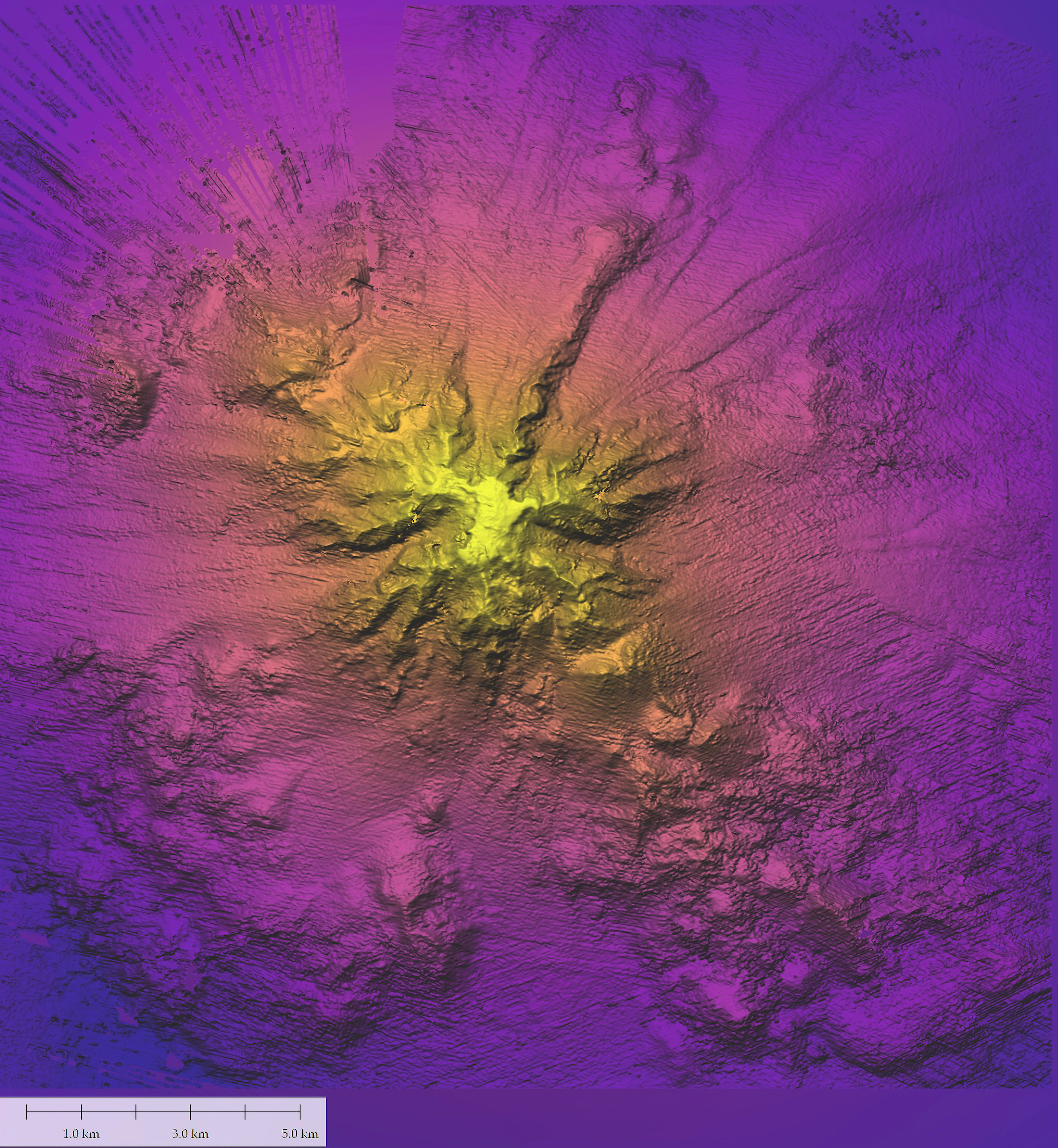
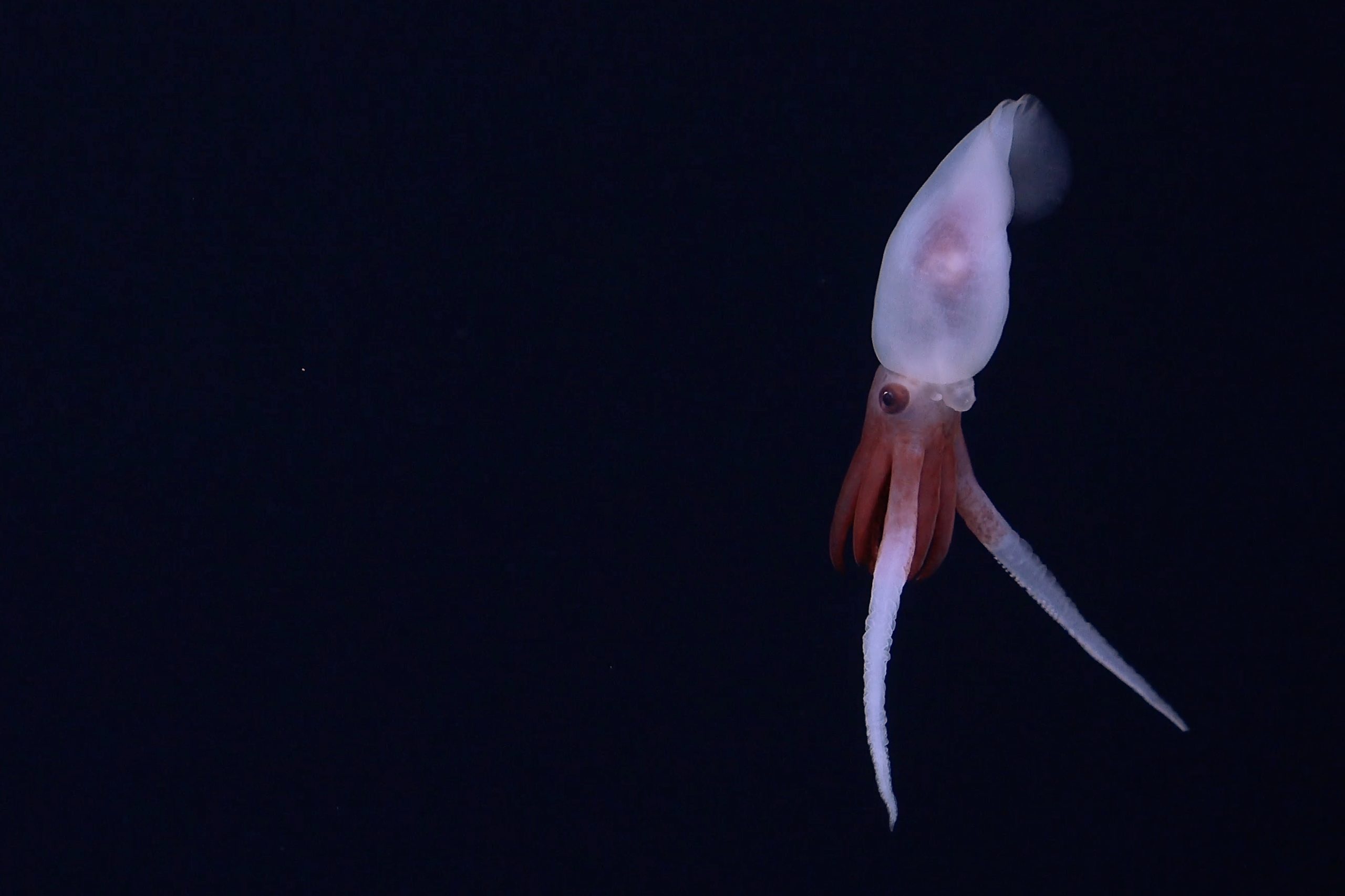
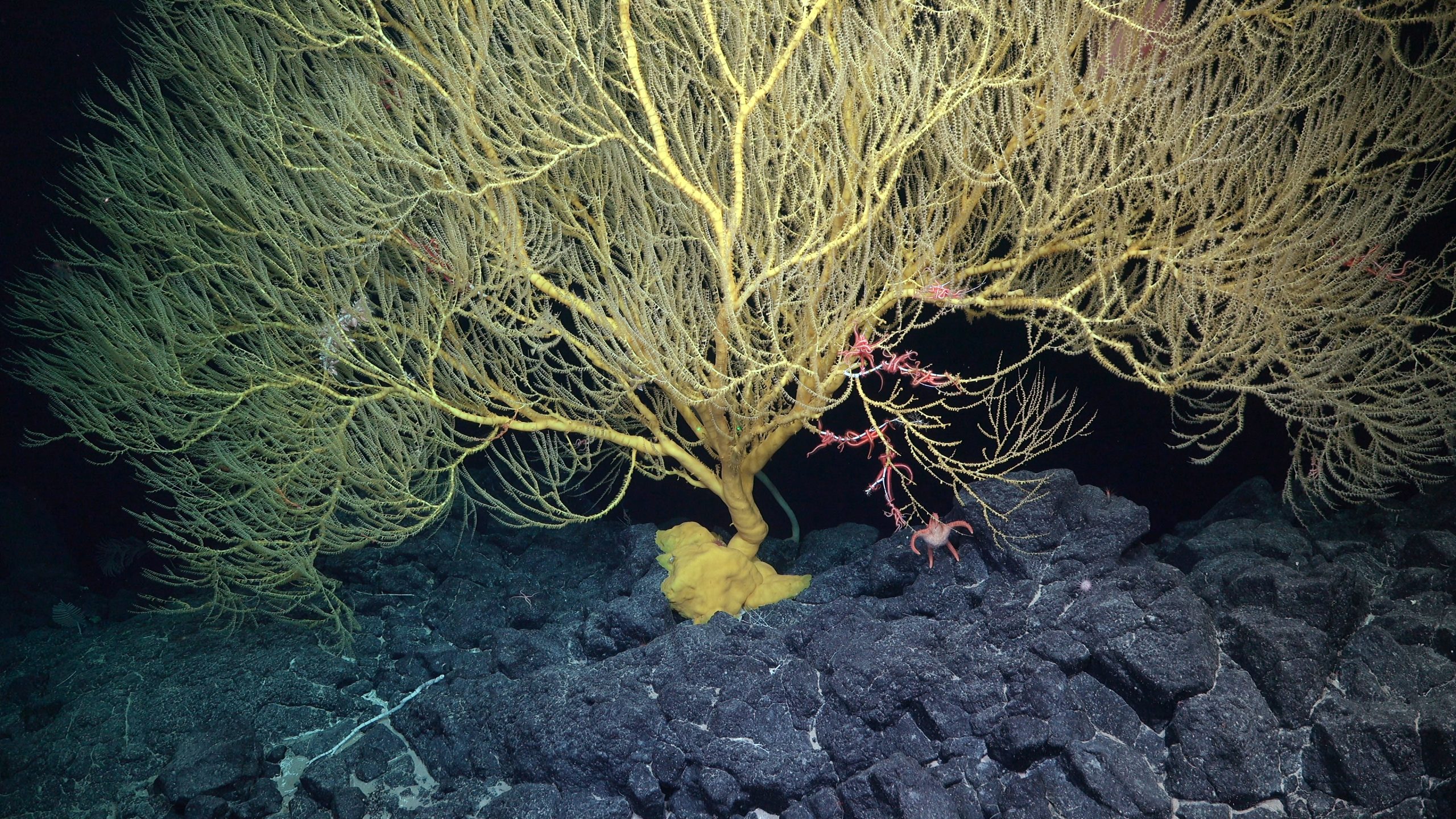
No comments:
Post a Comment